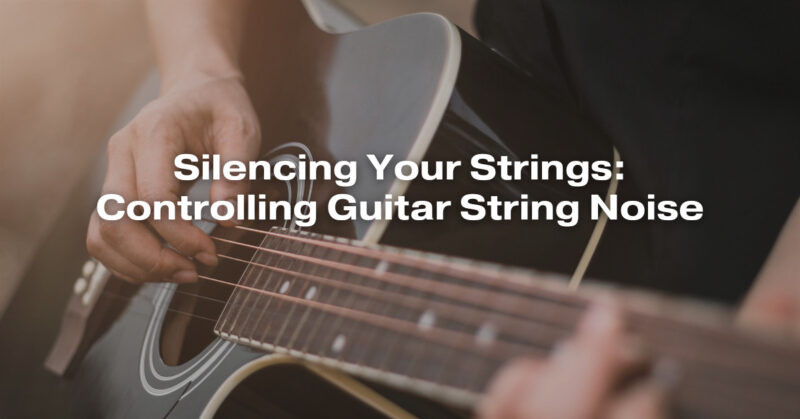Guitar string noise is an inevitable part of playing, especially on electric guitars. Unwanted string noise can be distracting and affect the clarity of your playing. Whether you’re a beginner or an experienced guitarist, learning how to control and minimize string noise is crucial for achieving a clean and professional sound. In this guide, we’ll explore various techniques and tips to help you silence your strings and improve your overall playing experience.
Understanding Guitar String Noise
Before we delve into techniques to control string noise, let’s understand where it comes from:
1. Fretting Hand Noise: When you press down on the strings with your fretting hand, your fingers can inadvertently touch neighboring strings, creating unwanted noise.
2. Picking Hand Noise: The picking hand, whether using a pick or fingers, can strike strings unintentionally, leading to noise.
3. Open String Noise: Open strings can ring out when you don’t want them to, causing unintended noise during chord changes or scale runs.
4. String Slides and Bends: Sliding or bending strings can produce noise if not executed with control.
Controlling String Noise
Now, let’s explore techniques and tips to control guitar string noise:
Fretting Hand Techniques
1. Fretting Hand Muting: Use your fretting hand to mute strings that you’re not actively playing. Place your fingers lightly on strings you want to mute, ensuring they don’t make unwanted noise.
2. Finger Placement: Pay attention to the placement of your fingers on the fretboard. Try to use the tips of your fingers to minimize contact with adjacent strings.
3. Finger Roll Technique: When playing chords or arpeggios, practice rolling your fingers slightly to the side to mute adjacent strings. This technique is particularly helpful for arpeggios.
4. Barre Chords: When playing barre chords, use the fleshy part of your index finger to lightly touch the higher strings to prevent them from ringing out.
Picking Hand Techniques
1. Palm Muting: Experiment with palm muting by resting the edge of your picking hand palm lightly on the strings near the bridge. Adjust the pressure to control the amount of muting.
2. Alternate Picking Control: When alternate picking, be mindful of your picking motion. Use precise, controlled strokes to avoid accidentally striking unwanted strings.
3. Fingerstyle Control: If you’re playing fingerstyle, practice plucking hand muting by using your fingers to rest on or lightly touch strings you’re not playing.
4. Angle of Attack: Adjust the angle of your pick or fingers when striking the strings. Experiment with different angles to minimize string noise.
Open String Control
1. Left-Handed Damping: Use your fretting hand fingers to lightly touch the open strings above and below the ones you’re playing. This prevents them from ringing out inadvertently.
2. String Dampeners: Consider using commercially available string dampeners or hairbands placed near the nut to mute open strings while playing.
3. Noise Gates: If playing electric guitar, experiment with noise gate pedals or software to reduce unwanted noise when you’re not playing.
String Slides and Bends
1. Controlled Slides: When sliding between frets or strings, execute the slide with precision to avoid generating excessive noise.
2. Bend Control: Similarly, control your string bends to prevent unintentional noise. Gradually bend the string with precision rather than forcefully pulling or pushing it.
Overall Tips
1. Practice Slowly: Slow down your playing to practice string noise control techniques deliberately. As you gain proficiency, gradually increase your speed.
2. Use Proper Setup: Ensure your guitar is set up correctly with appropriate action and string gauge to minimize string buzz and noise.
3. Ear Training: Train your ear to recognize and identify unwanted string noise so you can address it during practice.
4. Recording: Record your playing regularly to identify areas where string noise may be a problem and work on improving those sections.
Controlling guitar string noise is an essential skill that can significantly enhance your playing, especially when playing cleanly and precisely is crucial. By incorporating these techniques and practicing diligently, you’ll be able to silence your strings effectively and achieve a professional and polished sound in your guitar playing.

